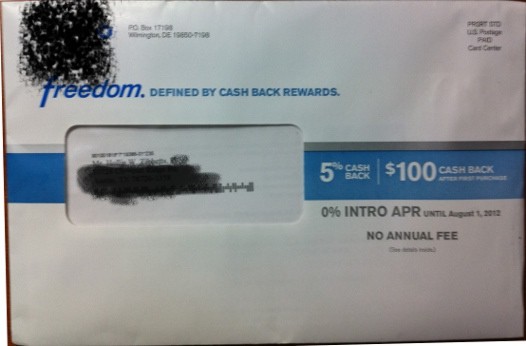The Basics Of Lines Of Credit
Post on: 26 Июль, 2015 No Comment

When it comes time for people to borrow money, there are many choices available. Borrowers can go to a bank for a traditional fixed or variable-rate loan, turn to pawnshops or payday lenders (though neither is a good idea apart from the most dire of circumstances), use credit cards, borrow from friends or family, or even turn to the web and specialized social lending or donation sites.
One of the lesser-known and lesser-used options is a line of credit. Businesses have been using lines of credit for years to meet working capital needs and/or take advantage of strategic investment opportunities, but they’ve never quite caught on as much with individuals. Some of this may be due to the fact that banks don’t often advertise lines of credit, and potential borrowers don’t think to ask. Here, then, are some of the basics about lines of credit.
A line of credit is basically a flexible loan from a bank or financial institution to an individual or business. Not unlike how a credit card offers you a limited amount of funds that you can use when, if, and how you wish, a line of credit is a limited/specified amount of money that an individual can access as needed and then repay immediately or over a pre-specified period of time. As a loan, a line of credit will charge interest as soon as money is borrowed, and borrowers must be approved by the bank (and such approval is a byproduct of the borrower’s credit rating and/or relationship with the bank).
Banks have only recently begun to market these products to any significant extent. This may be a byproduct of an economy that has reduced loan demand and new regulations that have restricted fee-based sources of income. Lines of credit tend to be lower-risk revenue sources relative to credit card loans, but they do complicate a bank’s earning asset management somewhat, as the outstanding balances can’t really be controlled once the line of credit has been approved.
When a Line of Credit is Useful
A line of credit addresses the fact that banks are not terribly interested in underwriting one-time personal loans, particularly unsecured loans, for most customers. Likewise, it is not economical for a borrower to take out a loan every month or two, repay it, and then continue the cycle. Lines of credit answer both of these issues by making a specified amount of money available if and when the borrower needs it.
By and large, lines of credit are not intended to be used to fund single one-time purchases such as houses or cars — that is what mortgages and auto loans are for – though lines of credit can be used to acquire items for which a bank might not normally underwrite a loan. Most commonly, individual lines of credit are intended for the same basic purpose as business lines of credit — to smooth out the vagaries of variable monthly income and expenses, and/or to finance projects where it may be difficult to ascertain the amount of funds needed upfront.
Consider a self-employed person whose monthly income is unpredictable or where there is a significant (and/or unpredictable) delay between performing the work and collecting the pay. While this might normally be a situation where people would turn to a credit card, a line of credit can be a cheaper option (lower interest rates) and offer more flexible repayment schedules. Lines of credit can also be useful in these situations to help fund estimated quarterly tax payments, particularly when there is a discrepancy between the timing of the accounting profit and the actual receipt of cash.
Lines of credit can be useful in situations where there will be repeated cash outlays, but the amounts may not be known upfront and/or the vendors may not accept credit cards, and in situations that require large cash deposits — weddings being one good example. Likewise, lines of credit were often quite popular during the housing boom to fund home improvement or refurbishment projects — people would frequently get a mortgage to buy the dwelling and simultaneously obtain a line of credit to help fund whatever renovations or remodeling were needed.
Personal lines of credit have also appeared as part of bank-offered overdraft protection plans. While not all banks are particularly eager to explain overdraft protection as a loan product (it’s a service, not a loan!) and not all overdraft protection plans are underpinned by personal lines of credit, many are. Here again, though, is an example of the use of a line of credit as a source of emergency funds on a quick, as-needed basis.
The Problems with Lines of Credit
Like any loan product, lines of credit are both potentially useful and potentially dangerous. If investors do tap a line of credit, that money has to be paid back (and the terms for such paybacks are spelled out at the time when the line of credit is initially granted). Accordingly, there is a credit evaluation process and would-be borrowers with poor credit will have a much harder time being approved for a line of credit.
Likewise, it’s not free money. Unsecured lines of credit — that is lines of credit not tied to the equity in your home or some other valuable property — are certainly cheaper than loans from pawnshops or payday lenders. and usually cheaper than credit cards, but they’re more expensive than traditional secured loans such as mortgages or auto loans. In most cases, the interest on a line of credit is not tax deductible.
Some, but not all, banks will charge a maintenance fee (either monthly or annually) if you do not use the line of credit, and interest is charged as soon as money is borrowed. Because lines of credit can be drawn on and repaid on an unscheduled basis, some borrowers may find the interest calculations for lines of credit more complicated and may surprised at what they end up paying in interest after they borrow from a line of credit.
Similarities and Differences Between Lines of Credit and Other Types of Borrowing
As suggested above, there are many similarities between lines of credit and other types of borrowing, but there are also many important differences that borrowers need to understand.
Credit cards
Like credit cards, lines of credit effectively have preset limits — you are approved to borrow a certain amount of money and no more. Also like credit cards, policies for going over that limit vary with the lender, though banks tend to be less willing than credit cards to immediately approve overages (instead they often look to renegotiate the line of credit and increase the borrowing limit). Also like credit cards, the loan is essentially pre-approved and the money can be accessed whenever the borrower wants, for whatever use the borrower intends. Lastly, while credit cards and lines of credit may have annual fees, neither charge interest until/unless there is an outstanding balance.

Unlike credit cards, lines of credit can be secured with real property. Prior to the housing crash, Home Equity Lines of Credit (HELOCs) were very popular with both lending officers and borrowers. While HELOCs are harder to get now, they are still available and tend to carry lower interest rates. Credit cards will always have monthly minimum payments and companies will significantly increase the interest rate if those payments are not met. Lines of credit may, or may not, have similar immediate monthly repayment requirements.
Loans
Like a traditional loan, a line of credit requires acceptable credit and repayment of the funds, and charges interest on any funds borrowed. Also like a loan, taking out, using, and repaying a line of credit can improve a borrower’s credit score .
Unlike a loan, which generally is for a fixed amount, for a fixed time, with a prearranged repayment schedule, there is much greater flexibility with a line of credit. There are also typically fewer restrictions on the use of funds borrowed under a line of credit — a mortgage must go towards the purchase of the listed property and an auto loan must go towards the specified car, but a line of credit can be used at the discretion of the borrower.
Pawn Loan/Payday Loan
There are some superficial similarities between lines of credit and payday loans, but that is really only due to the fact that many payday loan borrowers are frequent flyers that frequently borrow, repay, and/or extend their loans (paying very high fees and interest along the way ). Likewise, a pawnshop or payday lender does not care what a borrower uses the funds for, so long as the fees/loans are paid/repaid.
The differences, however, are more considerable. For anyone who can qualify for a line of credit, the cost of funds will be dramatically lower than for a payday/pawn loan. By the same token, the credit evaluation process is much simpler and less demanding for a payday/pawn loan (there may be no credit check at all) and the process is much, much quicker. It is also the case that payday lenders will seldom lend the amounts of money often approved in lines of credit (and banks will seldom bother with lines of credit as small as the average payday or pawn loan).
The Bottom Line
Lines of credit are like any financial product — neither inherently good nor bad, but only insofar as how people use them. Excessive borrowing against a line of credit can get somebody into financial trouble just as surely as borrowing with credit cards, and lines of credit can also be cost-effective solutions to month-to-month financial vagaries or executing a complicated transaction such as a wedding or home remodeling. As is the case with any loan, borrowers should pay careful attention to the terms (particularly the fees, interest, and repayment schedule), shop around and not be afraid to ask plenty of questions before signing.














